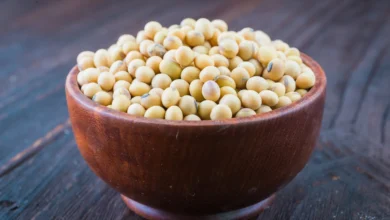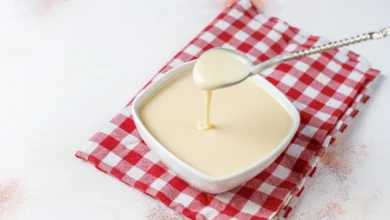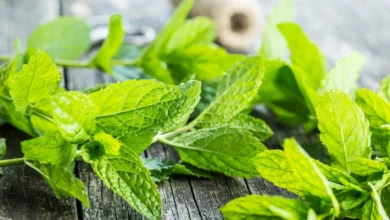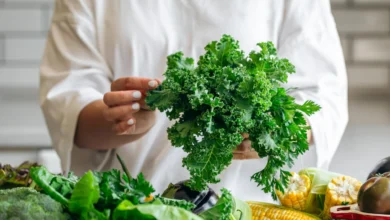Red Pepper Flakes Substitutes: Heat, Flavor, & More (+ Recipe)

Imagine this: I’m whipping up my signature spicy sausage pasta, ready to add those red pepper flakes for that extra fiery kick. But wait! My spice jar is empty. A wave of disappointment washes over me, but then a spark of inspiration strikes. Could I use something else to give my pasta that spicy punch? It turns out, the answer is yes! My experiment led to a delicious discovery and showed me the wonders of red pepper flake substitutes. Want to explore the delicious world of spices? Let me share what I learned!
Contents
- Red Pepper Flakes Substitutes
- Understanding the Heat Index for Substitues
- What are Red Pepper Flakes?
- Best Substitutes for Red Pepper Flakes (Top 10)
- Substitutes Comparison Table
- Red Pepper Flake Substitutes: Heat, Texture, and Best Uses
- Common Uses
- Substitutes Flavor Interaction
- Dietary Considerations
- What do Red Pepper Flakes Taste Like?
- How are Red Pepper Flakes Made?
- Homemade Red Pepper Flakes: Easy Recipe
- Health Considerations
- Frequently Asked Questions
- Why is it not favorable to consume chili flakes in excess?
- Are chili flakes the same as paprika?
- How much ground red pepper equals red pepper flakes?
- What is a non-spicy substitute for red pepper flakes?
- Are crushed red pepper and chili flakes the same?
- Can I use paprika instead of chili flakes?
- Can you use chili powder instead of chili flakes
- What are other substitutes for red pepper flakes?
- What is another name for red pepper flakes?
Red Pepper Flakes Substitutes
Let’s dive in and discover how to keep your cooking spicy.
Understanding the Heat Index for Substitues
Not all spices are created equal when it comes to spiciness! Our Heat Index helps you gauge the intensity of each red pepper flake substitute:
- Flame Scale (1-5): A simple visual representation, with 1 flame being the mildest and 5 flames being extremely hot.
- Scoville Heat Units (SHU): For those who like precision, we’ve included the typical Scoville Heat Unit range for each substitute. Remember, even within a type of pepper, there can be variation in heat level.
What is the Scoville Scale?
The Scoville Scale measures the concentration of capsaicin, the compound that creates the sensation of heat in chili peppers. You can find more information about the scale online!
What are Red Pepper Flakes?
If you’re a fan of spicy kicks in your food, chances are you’ve already met red pepper flakes – that popular spice found in shakers on pizza tables everywhere. Also known as red chili flakes, they’re made from dried and crushed chili peppers. These vibrant flakes pack a punch, offering a spectrum of fiery heat and robust flavor.
While cayenne peppers are the most common in commercially available blends, the level of heat in red pepper flakes can vary depending on the chili varieties used. The Scoville Heat Unit (SHU) measures this spiciness. Red pepper flakes add that distinctive touch of spice to a whole range of culinary creations. From pizzas and pasta sauces to stir-fries and marinades, their versatility makes them a must-have ingredient. Whether you’re looking to add subtle warmth or a bold fiery sensation to your recipes, red pepper flakes let you customize the flavors to your liking. Their convenience and flavorful touch make them perfect for any pantry.
READ: Chicken Pita Wraps
Best Substitutes for Red Pepper Flakes (Top 10)
When you run out of red pepper flakes, don’t panic! There are plenty of options to spice up your dish, most of which are easy to find at your local grocery store or already in your pantry. Here’s our top 10:
- Ground Cayenne Pepper: This offers a fiery substitute with a similar heat level to red pepper flakes. Use it sparingly, as it packs a punch – around 30,000 to 50,000 Scoville Heat Units (SHU). Start with ½ teaspoon ground cayenne pepper for every 1 teaspoon of red pepper flakes.
- Chili Powder: A versatile option featuring a blend of spices, typically including cayenne pepper, paprika, and garlic powder. It offers balanced heat and a richer flavor profile. If substituting in recipes, use a 2:1 ratio (double the amount of chili powder compared to red pepper flakes) for milder spiciness.
- Crushed Red Chili Peppers: Essentially dried red chili peppers that have been crushed into smaller flakes. They closely resemble red pepper flakes, offering a similar level of spiciness. It’s one of the closest matches in both flavor profile and appearance.
- Paprika: Milder than the previous options, paprika brings a vibrant red color and smoky flavor to dishes without overwhelming heat. To compensate for the difference, use more paprika than red pepper flakes. For a spicier touch, try smoked paprika.
- Chipotle Powder: This substitute, made from dried, smoked jalapeño peppers, provides a smoky depth and moderate heat, adding a unique dimension to your recipes.
- Dried Chili Peppers: If you like experimenting, use whole dried chili peppers to make your own homemade pepper flakes. Crush or grind them to your liking, and play with different chili varieties to personalize the heat level.
- Black Pepper: While not a direct substitute for the fiery kick of red pepper flakes, black pepper adds a subtle heat and peppery flavor to dishes. It works well in combination with other spices as a well-rounded substitute.
- Chili Paste: Options like sambal oelek, harissa, or sriracha offer concentrated heat and complex flavors. Use them judiciously, adjusting the amount to get your desired spice level.
- Cayenne Pepper Powder: Cayenne pepper powder (finely ground cayenne peppers) delivers intense heat, so moderation is key with this one! It’s significantly hotter than red pepper flakes.
- Dried Chili Flakes: Experiment with different varieties beyond classic red chili flakes! Aleppo pepper, ancho chili flakes, or Korean gochugaru flakes each bring unique flavors and varying heat levels to your dishes.
Substitutes Comparison Table
| Substitute | Pros | Cons | Best Uses |
| Ground Cayenne Pepper | Closest match in heat, readily available | Very spicy, use sparingly | When you want pure heat |
| Chili Powder | Balanced flavor profile, versatile | Less intense heat, different flavor profile | Soups, stews, sauces, spice rubs |
| Crushed Red Chili Peppers | Very similar to red pepper flakes | Less common than flakes | Anywhere you’d use traditional red pepper flakes |
| Paprika | Adds color, mild smoky flavor | Not spicy | Dishes needing visual appeal, mild warmth |
| Chipotle Powder | Smoky depth, unique flavor | Can be overpowering in some dishes | Southwestern dishes, marinades, sauces |
| Dried Chili Peppers | Customizable heat, adventurous | Requires extra prep (drying, grinding) | Creating your own unique pepper flake blends |
| Black Pepper | Adds subtle warmth, common ingredient | Not a direct heat substitute | Use with other spices for complexity |
| Chili Paste | Concentrated flavor, variety of options | Can be very hot, use in small amounts | Flavorful sauces, Asian cuisine |
| Cayenne Pepper Powder | Intense heat | Extremely spicy, easy to overdo | When you want maximum fiery kick |
| Dried Chili Flakes | Unique flavors, various heat levels | Specialty flakes may be harder to find | Experimenting with international cuisines |
Additional Notes:
- Adjust amounts: Start with smaller quantities and taste as you go!
- Availability: Consider how easy a substitute is to find in your local grocery store.
- Desired heat: Choose substitutes based on how much spice you want in your dish.
Red Pepper Flake Substitutes: Heat, Texture, and Best Uses
Heat Index Key:
- 🌶️ = Mild
- 🔥 = Moderate
- 🔥🔥🔥 = Medium-hot
- 🔥🔥🔥🔥 = Hot
- 🔥🔥🔥🔥🔥 = Extremely Hot
Availability Key:
* ⭐ = Commonly found in most grocery stores
* ✔ = May require a larger grocery store or specialty shop.
| Substitute | Variety | Appearance | Heat Index* | Texture | Best Substitutions For | Availability |
| Ground Cayenne Pepper | Limited | Fine powder | 🔥🔥🔥🔥 | Powdery | Dishes needing direct heat | ⭐ |
| Chili Powder | Diverse | Fine powder | 🔥🔥 | Powdery | Spice rubs, sauces, soups, stews | ⭐ |
| Crushed Red Chili Peppers | Diverse | Small flakes | 🔥🔥🔥 | Coarse flakes | Anywhere you’d use red pepper flakes | ⭐ |
| Paprika | Diverse | Fine powder | 🌶️ | Powdery | Dishes needing color or mild smokiness | ⭐ |
| Chipotle Powder | Limited | Fine powder | 🔥🔥🔥 | Powdery | Marinades, sauces, Southwestern-inspired dishes | ⭐ |
| Dried Chili Peppers | Vast | Whole peppers | Varies | Whole, flakes, powder | Homemade blends, adventurous cooking | ✔ |
| Black Pepper | Limited | Coarsely ground | 🌶️ | Coarsely ground | In spice mixes for a balanced flavor | ⭐ |
| Chili Paste | Varies | Thick paste | Varies | Paste | Sauces, marinades, Asian dishes | ✔ |
| Cayenne Pepper Powder | Limited | Fine powder | 🔥🔥🔥🔥🔥 | Powdery | Dishes where you want an extreme spice level | ✔ |
| Dried Chili Flakes | Diverse | Flakes | Varies | Flakes | Experimenting with global cuisines | ✔ |
Common Uses
| Substitute Name | Common Uses |
| Ground Cayenne Pepper | Hot sauces, curries, spicy stir-fries, anywhere pure heat is desired |
| Chili Powder | Chili con carne, Mexican dishes, Tex-Mex cuisine, taco seasoning |
| Crushed Red Chili Peppers | Pizza, pasta sauces, Italian dishes, soups, stews |
| Paprika | Hungarian goulash, deviled eggs, potato salad, garnishes |
| Chipotle Powder | Barbecue sauces, chili, adobo seasoning, Mexican stews |
| Dried Chili Peppers | Homemade spice blends, Asian and Indian curries, salsas |
| Black Pepper | Virtually any savory dish, often combined with other spices |
| Chili Paste | Thai curries, stir-fries, Asian sauces, marinades |
| Cayenne Pepper Powder | Spicy marinades, hot wings, any dish needing extreme heat |
| Dried Chili Flakes | Korean kimchi, Sichuan cuisine, Southeast Asian dishes |
Notes:
- This is just a starting point – many of these substitutes are delicious in a wider range of dishes!
READ: Substitutes for Dark Soy Sauce
Substitutes Flavor Interaction
| Substitute | Flavor Interaction |
| Ground Cayenne Pepper | Works well with most spices due to its pure heat. |
| Chili Powder | Pairs with cumin, oregano, garlic powder, onion powder |
| Crushed Red Chili Peppers | Similar to red pepper flakes, versatile with most spices |
| Paprika | Combines well with garlic powder, cumin, other warm spices |
| Chipotle Powder | Works well with cumin, oregano, lime, garlic |
| Dried Chili Peppers | Depends on chili type, explore traditional pairings online |
| Black Pepper | Essential in most spice blends, pairs with everything! |
| Chili Paste | Flavor varies greatly, read the paste’s ingredient list |
| Cayenne Pepper Powder | Use carefully, but pairs well with bolder spices |
| Dried Chili Flakes | Varies by type, research pairings based on the flake |
Dietary Considerations
- Ground Cayenne Pepper: Gluten-Free, Vegan
- Chili Powder: Often Gluten-Free, Vegan (Caution: read labels)
- Crushed Red Chili Peppers: Gluten-Free, Vegan
- Paprika: Gluten-Free, Vegan
- Chipotle Powder: Gluten-Free, Vegan
- Dried Chili Peppers: Gluten-Free, Vegan
- Black Pepper: Gluten-Free, Vegan
- Chili Paste: Varies (read labels carefully)
- Cayenne Pepper Powder: Gluten-Free, Vegan
- Dried Chili Flakes: Gluten-Free, Vegan
What do Red Pepper Flakes Taste Like?
Red pepper flakes possess a distinct taste that’s primarily defined by one thing: spicy heat! While the terms “hot” and “spicy” are sometimes used interchangeably, red pepper flakes deliver a pungent flavor that registers as pure fiery heat. Depending on the variety and the quantity used, the heat can range from moderate to intense.
Alongside their primary spicy kick, red pepper flakes can also have slightly smoky or earthy undertones. However, the overall flavor profile will vary based on the specific chili peppers used in the blend and their preparation.
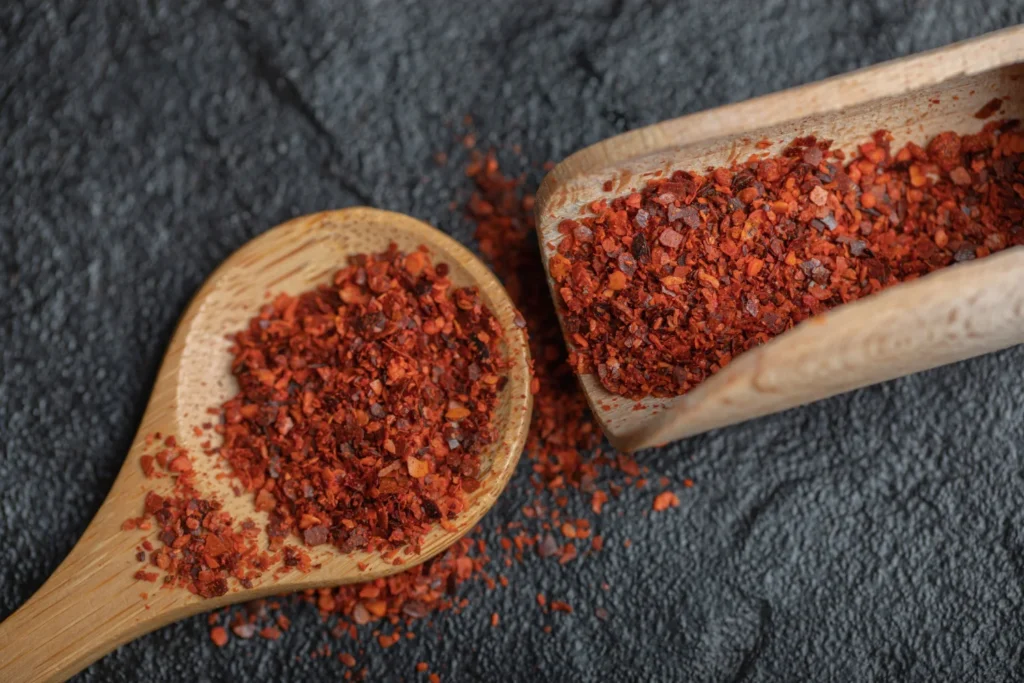

READ: Substitutes for Mint
How are Red Pepper Flakes Made?
The journey of red pepper flakes starts with harvesting ripe, vibrantly red chili peppers. These peppers are then dried until they become brittle, which concentrates their flavor and heat. Once fully dried, the peppers go through a process of being crushed or ground. For traditional red pepper flakes, they’re left as coarse flakes for that characteristic texture.
To make your own at home, you can use a mortar and pestle or a spice grinder. The intensity of the heat depends on the type of chili peppers used and whether you include the seeds and inner membranes (which pack the most capsaicin, the compound that creates the spicy sensation).
Commercial varieties of red pepper flakes may sometimes contain additional seasonings and additives to enhance flavor or control heat levels.
Homemade Red Pepper Flakes: Easy Recipe
Making your own red pepper flakes is a simple and rewarding process that lets you completely customize the heat level and flavor. Here’s a step-by-step guide:
- Choose & Prepare Your Chili Peppers: Start with ripe, vibrant red chili peppers. Popular choices include cayenne, Thai chilies, or bird’s eye chilies for an intense kick. Wash them thoroughly and pat them dry.
- Drying: There are several methods for drying your peppers:
- Hang dry: If you have time and space, hang the peppers in a well-ventilated area where air circulation is good. A sunny window or a dedicated drying room works well.
- Dehydrator: A dehydrator is the fastest method. Set it to a low temperature and follow the manufacturer’s instructions for drying peppers.
- Oven: You can dry them in the oven on the lowest setting with the door slightly open.
The goal is for the peppers to become completely dry and brittle.
- Removing Seeds & Stems: This step is optional. Keeping the seeds and inner membranes will increase the spiciness of your flakes.
- Crushing: To create coarse flakes, use a mortar and pestle or a spice grinder. Grind until you reach your desired texture.
- Sieving & Storing: Using a fine-mesh sieve, remove any larger pieces. Transfer your homemade red pepper flakes to an airtight container like a glass jar. Store in a cool, dark place away from direct sunlight to preserve their flavor and heat.
Tips and Tricks for Successful Swaps
- Start Small, Taste Big: Spices and their substitutes vary in heat intensity. Always begin with less than you think you need, and taste your food as you go!
- Consider the Color: Some substitutes, like paprika, offer a vibrant red hue. Think about how the substitute’s color will impact the final look of your dish.
- Spice Up the Mild: If you’re using a milder substitute, pair it with other flavorful spices like garlic, cumin, or oregano to add complexity and depth to your dish.
Health Considerations
When substituting red pepper flakes, it’s important to be mindful of potential health considerations. For those with sensitive stomachs, the intense heat of certain substitutes can cause digestive discomfort or trigger acid reflux. Additionally, some individuals may have allergies or sensitivities to specific spices in the nightshade family, to which chili peppers belong. While spices like cayenne pepper and paprika offer potential health benefits, moderation is key. Start with smaller amounts of any substitute and adjust based on your individual tolerance and any existing health conditions. If you are unsure about potential interactions with medications or have any concerns, it’s always a good idea to consult your doctor.
Conclusion
Expanding your spice knowledge beyond red pepper flakes opens up a world of culinary possibilities! With a variety of options for heat, flavor, and texture, you can confidently substitute red pepper flakes in any recipe. Remember, start with smaller amounts and adjust to taste, and always consider those dietary notes for any restrictions. Whether you crave a touch of warmth, crave fiery intensity, or want to explore global flavors, this guide has empowered you to find the perfect substitute. So, get creative in the kitchen and let your taste buds guide your next culinary adventure!
_______________________________
Frequently Asked Questions
Why is it not favorable to consume chili flakes in excess?
While chili flakes can add a delicious spicy punch to dishes, consuming them in excess might not be favorable for everyone. The intense heat can irritate sensitive stomachs, trigger acid reflux, and cause overall digestive discomfort. Moderation is key, and it’s important to be mindful of your personal tolerance.
Are chili flakes the same as paprika?
While both chili flakes and paprika come from dried, crushed chili peppers, they are not the same. Chili flakes primarily deliver spicy heat and an intense flavor. Paprika is a ground spice that’s typically sweet and mild, offering a milder flavor profile and that signature vibrant red color. They can both add a delightful kick to dishes, but they differ significantly in heat intensity and taste profile.
How much ground red pepper equals red pepper flakes?
When substituting ground red pepper for red pepper flakes, consider the difference in intensity and heat. As a general guideline, use about half the amount of ground red pepper. For example, if a recipe calls for 1 teaspoon of red pepper flakes, use roughly ½ teaspoon of ground red pepper.
What is a non-spicy substitute for red pepper flakes?
If you want a flavor boost without the intense heat, consider paprika or smoked paprika. They provide a mild, smoky flavor that can add depth to dishes without overwhelming spiciness. Use equal amounts in recipes as you would red pepper flakes. You can also explore other herbs and spices like oregano, thyme, or garlic powder to add a flavorful twist without the spiciness.
Are crushed red pepper and chili flakes the same?
Yes, generally, crushed red pepper and chili flakes are used interchangeably. Both refer to dried and crushed red peppers, often a mixture of varieties. While there might be slight variations depending on the specific blends, you can typically treat them as the same.
Can I use paprika instead of chili flakes?
Paprika will not offer the same level of heat as chili flakes since it’s made from milder pepper varieties. However, if the recipe calls for a touch of spice, hot paprika can be a better option, adding color along with a slight kick.
Can you use chili powder instead of chili flakes
Yes, you can substitute chili powder for chili flakes, but adjust the amount accordingly. Chili powder blends offer a milder heat and different flavor profile, so it won’t be an exact flavor match. Use about twice the amount of chili powder compared to the red pepper flakes called for in the recipe.
What are other substitutes for red pepper flakes?
- Cayenne pepper powder (also called ground cayenne): The closest substitute in terms of heat, but use this sparingly.
- Other spices or spice blends: Consider options like hot sauce, chili paste, or different dried chili flakes (ancho, Korean gochugaru, etc.) depending on your desired flavor.
What is another name for red pepper flakes?
Common synonyms for red pepper flakes include crushed red pepper and chile flakes. Sometimes, manufacturers give their blends trademark names, but be aware these often include seeds and might have a mix of peppers. For the most basic, interchangeable meaning, stick to the terms above.

